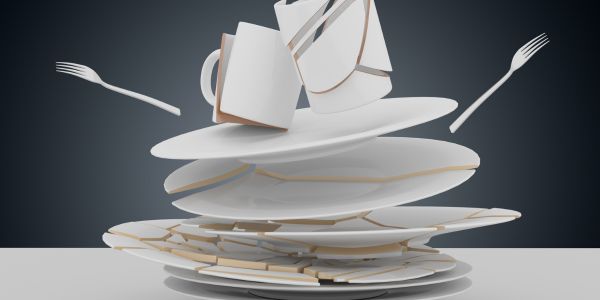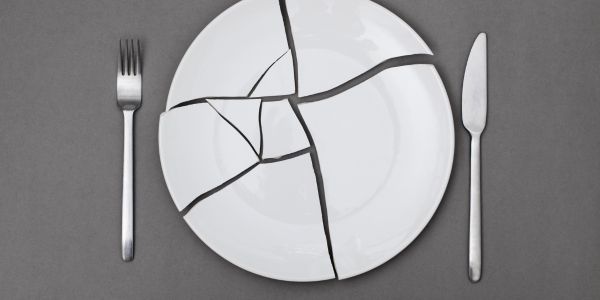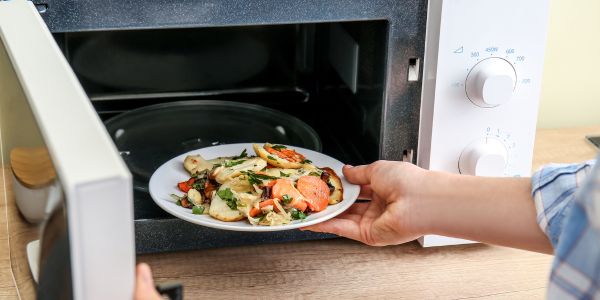Ceramic plates, with their exquisite designs and timeless appeal, have long graced our tables as essential vessels for presenting food and enhancing dining experiences. These plates, crafted from natural materials and refined through intricate processes, hold a delicate balance between aesthetic elegance and functional utility. However, amidst their allure lies an inherent question that has piqued the curiosity of many: are ceramic plates truly breakable?
The interplay of durability and fragility in ceramic plates is a captivating phenomenon, rooted in the material’s intricate composition and the meticulous techniques employed during their creation. This juxtaposition between strength and susceptibility showcases the complexity of ceramics as an art form and functional object, making it a subject of intrigue for both artisans and enthusiasts alike.
In this exploration, we delve into the factors that contribute to the breakability of ceramic plates. From the science behind their molecular structure to the influence of various firing techniques, glazing methods, and design intricacies, we aim to unravel the mysteries surrounding their vulnerability. Additionally, we will consider the evolution of ceramics from ancient civilizations to modern innovations, highlighting how advancements have sought to enhance the resilience of these delicate pieces.
As we navigate the realms of artistic craftsmanship, scientific understanding, and historical context, we invite you to join us in gaining a comprehensive insight into the captivating world of ceramic plates. By the end of this exploration, we hope to foster a deeper appreciation for these objects and an enriched understanding of the fine balance between strength and fragility that defines their nature.
Is ceramic plates breakable

Yes, ceramic plates are indeed breakable. Ceramic is a type of material that is inherently fragile and can easily break or shatter when subjected to sufficient force or impact. The breakability of ceramic plates is due to the nature of the material itself and its molecular structure. Ceramics are made from clay that is shaped and then fired at high temperatures to create a hardened and rigid structure.
However, despite their breakable nature, ceramic plates are often valued for their aesthetic appeal, versatility, and ability to withstand normal usage during dining and serving. To mitigate the risk of breakage, ceramic plates are often designed and manufactured with techniques that enhance their strength and durability. Glazing, for example, not only adds an appealing finish but also provides an additional protective layer.
That said, it’s important to handle ceramic plates with care to minimize the risk of breakage. Sudden impacts, extreme temperature changes, or mishandling can all contribute to the likelihood of a ceramic plate breaking. Proper usage, storage, and cleaning can help extend the lifespan of ceramic plates and keep them in good condition for longer periods.
Why are ceramic plates breakable?

Ceramic plates are breakable due to the inherent properties of the ceramic material and their specific molecular structure. Here are the key reasons why ceramic plates are prone to breaking:
Brittleness:
Ceramics are generally brittle materials. This means that they have a tendency to fracture or break rather than deform under stress. The molecular structure of ceramics consists of closely packed atoms held together by strong chemical bonds. When a force is applied, these bonds can easily rupture, leading to the material breaking.
Crystalline Structure:
Many ceramics have a crystalline structure. This orderly arrangement of atoms makes ceramics rigid and strong in some aspects, but it also means that when stress is applied in a particular direction, the material can fracture along specific planes.
Lack of Ductility:
Ductility refers to a material’s ability to undergo plastic deformation (change shape without breaking) under stress. Ceramics, unlike metals or polymers, have low ductility. When stress is applied beyond a certain point, ceramics don’t stretch or bend; they break.
Porous Nature:
Traditional ceramics, like the ones used in pottery and ceramic plates, are often porous materials. Porosity refers to the presence of tiny air pockets or voids within the material. While porosity can make ceramics more lightweight and provide better insulation, it also reduces the material’s overall strength and resistance to impact.
Processing and Firing:
The process of creating ceramics involves shaping clay or other ceramic materials, followed by firing at high temperatures to solidify the structure. While firing strengthens the material by promoting the formation of chemical bonds, it can also introduce stresses due to uneven heating and cooling. This can lead to microcracks or imperfections that make the ceramic more susceptible to breaking.
Variability in Composition:
The composition of ceramic materials can vary widely. Different types of clay, additives, and firing techniques result in ceramics with varying degrees of strength and fragility. This variability means that while some ceramics may be more resilient, others could be more brittle.
Environmental Factors:
Environmental conditions, such as temperature fluctuations, humidity changes, and exposure to moisture, can impact the structural integrity of ceramics. These factors can affect the properties of the material over time, potentially making it more susceptible to breaking.
In summary, the combination of a crystalline structure, brittleness, lack of ductility, porosity, firing processes, and other factors contribute to the breakability of ceramic plates. While advancements in ceramics technology have led to improvements in strength and durability, ceramics remain inherently fragile compared to other materials like metals or plastics.
Will ceramic plates break in the oven

Ceramic plates can potentially break in the oven, especially if they are subjected to sudden temperature changes or extreme heat. While many ceramic plates are designed to withstand oven use at moderate temperatures, there are important considerations to keep in mind:
Temperature Limits:
Ceramic plates are generally safe for oven use up to a certain temperature, which is typically indicated by the manufacturer. Going beyond this temperature can increase the risk of breakage.
Preheating:
It’s important to avoid placing ceramic plates directly into a preheated oven, especially if they are cold. Sudden exposure to high heat can cause the ceramic to crack due to thermal shock.
Even Heating:
Ceramic plates should be heated gradually to avoid stress caused by uneven expansion. Placing the plate on a cool or room temperature oven rack and then gradually raising the temperature can help prevent breakage.
Avoid Direct Heat:
Placing a ceramic plate too close to the heating element or flame can lead to localized hot spots that stress the plate unevenly.
Consider Oven-Safe Ceramics:
Some ceramic plates are specifically labeled as oven-safe. These are often designed to withstand higher temperatures without as much risk of breakage.
Size and Thickness:
The size and thickness of the ceramic plate can also affect its ability to handle heat. Thicker plates may be more resilient, but it’s important to still follow proper heating guidelines.
Rapid Changes in Temperature:
Abrupt changes in temperature, such as transferring a hot plate directly to a cold surface or vice versa, can cause thermal shock and result in cracking.
To use ceramic plates in the oven without risking breakage, follow these general guidelines:
- Check the manufacturer’s recommendations for oven use and temperature limits.
- Gradually heat and cool the ceramic plate to avoid sudden temperature changes.
- Avoid extreme temperature fluctuations.
- Place the plate on a room temperature oven rack to allow for even heating.
- Consider using ceramics labeled as oven-safe for higher temperatures.
In summary, while some ceramic plates can be used in the oven safely, it’s important to exercise caution and follow proper guidelines to prevent breakage due to thermal shock or extreme heat.
How to prevent ceramic plates from braking

Preventing ceramic plates from breaking requires a combination of careful handling, storage, and maintenance. While ceramic plates are inherently fragile, following these tips can help extend their lifespan and minimize the risk of breakage:
Handle with Care:
When handling ceramic plates, especially when carrying or transporting them, be gentle and avoid applying sudden pressure or impacts. Hold them with both hands if necessary, and avoid stacking heavy items on top of them.
Avoid Extreme Temperatures:
Rapid changes in temperature can cause ceramics to expand or contract, potentially leading to cracks or breaks. Avoid placing hot ceramic plates directly in cold water or onto cold surfaces, and vice versa.
Use Proper Storage:
When storing ceramic plates, use plate separators or soft padding to prevent direct contact between plates. This can help minimize the risk of plates rubbing against each other and potentially chipping or breaking.
Avoid Overloading:
When using ceramic plates for serving food, avoid overloading them with excessive weight. Distribute heavy or large portions evenly across the plate rather than piling them in one area.
Choose Safe Surfaces:
Place ceramic plates on stable and flat surfaces. Avoid placing them near the edge of counters or tables where they might be more prone to falling.
Inspect for Damage:
Regularly inspect your ceramic plates for any signs of cracks, chips, or other damage. If you notice any issues, consider discontinuing their use to prevent further deterioration.
Use Proper Utensils:
When cutting or serving food on ceramic plates, use utensils that are not excessively sharp, as sharp utensils can scratch or damage the glaze.
Hand Wash When Possible:
While some ceramic plates are labeled as dishwasher-safe, hand washing is generally gentler on ceramics. Use mild dish soap and a soft sponge or cloth to clean them. Avoid using abrasive scrubbers that could scratch the surface.
Avoid Harsh Chemicals:
Do not use harsh chemicals, bleach, or abrasive cleaners on ceramic plates, as these can damage the glaze and weaken the material.
Store Vertically:
If you need to store your ceramic plates for an extended period, consider storing them vertically, rather than stacked, to reduce the pressure on individual plates.
Choose Well-Made Ceramics:
When purchasing ceramic plates, opt for products from reputable manufacturers known for quality craftsmanship. Well-made ceramics are often more durable and less prone to breakage.
Consider Alternative Materials:
If you’re concerned about breakage, consider using alternative materials for certain occasions, such as outdoor gatherings, where the risk of accidents might be higher.
By following these guidelines and treating your ceramic plates with care, you can help minimize the risk of breakage and ensure that your cherished ceramic pieces last for a long time.
How long does ceramic plate lasts

The lifespan of a ceramic plate can vary widely depending on factors such as the quality of the ceramic, how it’s used and cared for, and the specific conditions it’s exposed to. On average, well-made ceramic plates that are used for regular dining and are properly cared for can last anywhere from several years to decades. Here are some factors that can influence the lifespan of a ceramic plate:
Quality of Ceramic:
High-quality ceramics that are made using superior craftsmanship and materials are likely to last longer than lower-quality alternatives.
Usage:
Plates that are used regularly for everyday meals may experience more wear and tear compared to plates reserved for special occasions. Plates used in commercial settings like restaurants may have a shorter lifespan due to frequent use.
Care and Handling:
Proper handling, cleaning, and storage can significantly extend the lifespan of ceramic plates. Following care guidelines and avoiding rough handling can help prevent damage.
Exposure to Heat and Cold:
Extreme temperature changes can cause ceramic to expand and contract, potentially leading to cracks. Avoid exposing ceramic plates to sudden temperature shifts.
Accidents:
Accidental drops, impacts, and collisions can lead to immediate breakage or contribute to the weakening of the plate over time.
Environmental Factors:
Factors such as humidity, moisture, and exposure to sunlight can impact the condition of ceramic plates, especially if they are displayed as decorative pieces.
Type of Glaze:
The type of glaze used on the ceramic can also affect its longevity. High-quality glazes can provide better protection against scratches and wear.
Maintenance:
Regular inspection for cracks, chips, and signs of wear can help address issues before they worsen, potentially extending the plate’s lifespan.
Material Composition:
Different types of ceramics (stoneware, porcelain, earthenware, etc.) have varying levels of durability. Porcelain, for example, is generally more durable than earthenware.
Manufacturing Techniques:
Plates that undergo advanced manufacturing techniques, like double-firing, may have enhanced durability compared to plates that undergo simpler processes.
It’s important to note that while ceramics are breakable by nature, their longevity can be significantly influenced by how they are used and cared for. If you have valuable or sentimental ceramic plates, taking extra care in handling and maintenance can help preserve them for a longer period.
Does Ceramic plate Break Easily?

Yes, ceramic plates are generally considered to be fragile and can break relatively easily compared to other materials like metals or plastics. The inherent brittleness of ceramics, along with their crystalline structure and lack of ductility, makes them susceptible to breaking when subjected to sufficient force or impact.
While ceramic plates are designed and manufactured with techniques to enhance their strength and durability, they are still more breakable than materials like tempered glass or certain types of plastics. Proper care, handling, and maintenance are essential to prevent accidental breakage and to ensure that ceramic plates remain intact for a longer period of time.
FAQ’s
Certainly, here are 10 questions and answers about the breakability of ceramic plates:
Are ceramic plates breakable?
Yes, ceramic plates are breakable due to their inherent brittle nature and crystalline structure.
Why are ceramic plates more prone to breaking compared to other materials?
Ceramic plates are brittle and lack ductility, causing them to fracture rather than deform under stress.
Can ceramic plates withstand normal usage without breaking?
While ceramic plates are designed for regular use, they require careful handling to avoid impacts and stresses that can lead to breakage.
What factors contribute to the breakability of ceramic plates?
The molecular structure, firing processes, glazing, and composition of ceramics influence their vulnerability to breaking.
How can sudden temperature changes affect ceramic plates?
Rapid temperature shifts can cause ceramics to expand or contract unevenly, potentially leading to cracks or breaks.
Can you prevent ceramic plates from breaking?
While you can’t eliminate the risk entirely, careful handling, proper storage, and avoiding extreme conditions can help minimize breakage.
Are there certain utensils that should be avoided when using ceramic plates?
Sharp utensils should be avoided as they can scratch or damage the surface of ceramic plates.
How can proper cleaning and maintenance extend the lifespan of ceramic plates?
Hand washing with mild soap, avoiding abrasive cleaners, and regular inspection can help prevent damage and prolong their use.
What role does the quality of ceramics play in their breakability?
Higher-quality ceramics with better craftsmanship and materials can be more durable and less prone to breakage.
Are there alternative materials to consider if breakage is a concern?
Yes, materials like tempered glass or plastics can be more resilient alternatives for situations where breakage is a significant risk.
Remember that while ceramic plates are breakable, proper care and attention can help preserve their integrity and extend their lifespan.
Conclusion
In conclusion, the breakability of ceramic plates is a testament to the delicate balance between artistry and functionality. Their intrinsic fragility, rooted in the brittleness of ceramics and their unique molecular composition, underscores the need for mindful handling and care. While these plates possess an enchanting allure with their intricate designs and timeless elegance, they also demand respect for their vulnerability to impacts and stress.
The science behind ceramics unveils the complexity of their crystalline structure, lack of ductility, and susceptibility to temperature changes. Yet, through centuries of craftsmanship and innovation, artisans have refined techniques that strengthen these delicate objects, marrying beauty with durability.
While the breakability of ceramic plates remains a constant, our awareness of the factors influencing their resilience empowers us to navigate the fine line between preserving their artistic essence and ensuring their functional longevity. Whether displayed as works of art or used for everyday dining, the journey of ceramic plates serves as a reminder of the intricate interplay between strength and fragility in the world of material culture.